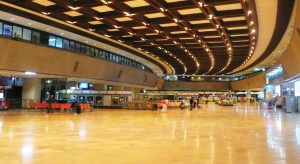PASSENGER traffic at the Ninoy Aquino International Airport (NAIA) rose sharply in the second quarter following the easing of safety requirements for travelers, including quarantines and test results.
The Manila International Airport Authority (MIAA) said international passenger volume was up 129% from a quarter earlier, while domestic traffic was up 87%.
Domestic passenger traffic at the various NAIA terminals — arrivals as well as departures — topped 5.94 million in the second quarter, according to percentage changes derived from raw throughput data provided on the MIAA website for both periods.
International passenger traffic rose to more than 2.35 million in the three months to June.
In its financial report for the first quarter, the NAIA operator returned a net loss of P234 million, narrowing from a loss of P583 million a year earlier.
MIAA is required to remit 50% or more of its net income as dividends to the National Treasury.
“This is apart from the 20% National Government share in MIAA’s operating income based on actual collections, excluding income from utilities and terminal fees/passenger service charge, and the 30% corporate income tax, as well as the P100 share on passenger service charge and the contributions to National Civil Aviation Security Committee, which is P60 for every international passenger and P15 for every domestic passenger,” it said in its report.
Cebu Pacific, Philippine Airlines, and AirAsia Philippines continue to boost flight service on both domestic and international routes to take advantage of the increased demand for air travel resulting the relaxation of pandemic-related restrictions.
On Feb. 10, the Philippines started accepting nationals that do not require visas to enter the country. Since April 1, borders have been opened to all nationals.
Foreign visitors have totaled 517,516 as of May 25 since the full reopening of borders with minimal quarantine requirements, according to the Department of Tourism.
The US was the top source of arrivals between Feb. 10 and May 25 with 104,589, followed by South Korea with 28,474 arrivals, and Canada 24,337. — Arjay L. Balinbin
